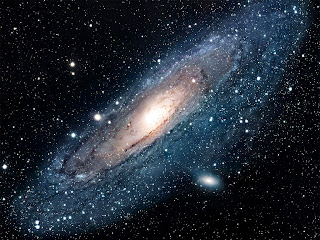I want to apologize. I know when these blogs are due and i for some reason forgot we had one this week. It's a bummer because I had a lot of fun doing it, wish I would've done it sooner! Better late than never, but I know this will never happen again!
1: Monday -What Do
the Colors in the Composite image of the Sun mean?
A: Orange and Blue represent Opposite Polarity of a magnetic field and the puce green hue
represents the UV light coming off the Arcs moving from one end of the magnetic
field to the other.
2: Tuesday-What Does TRACE Stand for? How many pixels are in
a TRACE image?
A: The Acronym TRACE ( TRACE CHRISM HiRISE….. I see an
naming pattern….) stands for Transition Region And Coronal Explorer,
which contains mirrors coated with special materials which block certain
wavelengths from being seen by the instrument while letting in others, a revolutionary
thing in 1998. Each TRACE Image contains 1.05 million pixels representing an
area on the sun of 360,000km x360,000km.
3: Wednesday- What are CME’s? ( Again with the Acronym
names, well I guess for them) and how do
they become cannibals?
A: A CME is a Coronal Mass Ejection, where electrified magnetic
gas is spewed from a solar eruption into space. What makes a CME “cannibalistic”
is that lager, faster CMEs can “devour” their smaller slower counterparts,
which cause longer nastier sun storms for
us if they are directed towards Earth. Normal sun storms distort the
magnetic field of earth, sending today’s technology ‘s into enough of a
tailspin, but cannibalistic CMEs have longer more severe storms that are more
harmful to the magnetic field.
4: Thursday- How is the nighttime aurora created?
A: The nighttime aurora begins at the sun. Within the sun’s convection cells,
gross amounts of energy (plasma) from the Hydrogen being fused into Helium in the Core, create strong magnetic fields. Powerful fields
push up through the layers of the sun and become sunspots, the magnetic field
arching out of the sun. I (f the field is powerful enough it will bend and
stretch, like a rubber band until it breaks and will release a huge gassy cloud
of plasma called a solar storm. After about 18 hours the Solar storm will hit
Earth. Earth has it’s own magnetic field that will deflect the storm. The culmination
of two forces funnels the plasma towards the poles of earth, creating the
nighttime aurora ( and also the daytime aurora too). ( That is such a cool
thing! )
5: Friday- What’s the Job Title ( from the NASA job
search). What’s the expected salary? Where is it located?
A: Well I found a Geologist Job…… In Mobile, Alabama? The
job title isn’t directly linked to NASA but the job’s recipient will “Assist NASA” in 4-5
sates as well as central and south America, the scope of this job is quite broad.
The expected salary is $68,350-$89,450.
6: What was the best part of the Scavenger hunt?
A: I really liked learning about the Nighttime Aurora. I've seen pictures of them before and I've always been so mystified by their curly wisps across the inky black sky. Learning why they happen does take away a bit of that mystical aspect it once held for me ( Like when you realize mom is the tooth fairy) but it also excites me. I want to see the Aurora in person, to see the plasma bend into pretty hues. I have a newfound reverence for the Aurora, one rooted more in science than in mystery.




